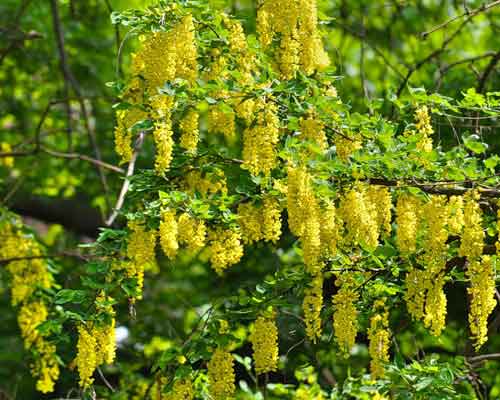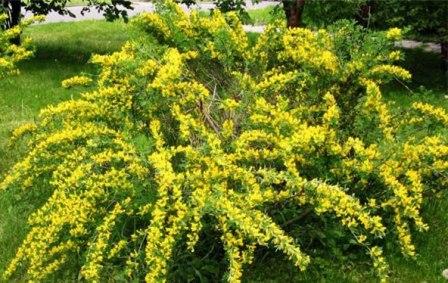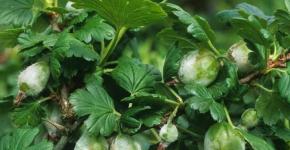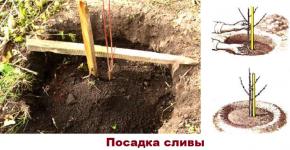Bobovnik garden shrub (golden rain): planting and care in the Moscow region, tips for growing in a summer cottage
In this publication, we will talk about the rules of planting and the intricacies of caring for a bean plant, give photo examples of its popular varieties, and also give useful recommendations for growing bean on a personal plot.
Legume is a branched, multi-stemmed shrub with dark green leaves and bright yellow flowering inflorescences, exuding a delicate honey, slightly resinous aroma. Most common in the southern European countries, which are the homeland of the plant, as well as in the Balkans and France.
It was brought to Russia at the beginning of the 20th century, where, thanks to its refined attractiveness and good frost (up to -25 ° C) and drought-resistant qualities, it quickly spread. Most successfully acclimatized in the southern regions and the Caucasus. It reached its peak of popularity at the beginning of the 20th century, surpassing the then widely known standard roses.
Plant classification
In fact, the name "bean" is carried by 2 completely different plants belonging to different families:
- Steppe almond, Rosaceae family
- Legume, or Laburnum, of the legume family (Fabaceae)
The first kind is different:
- short stature (up to 1.5 m in height),
- wide elliptical leaves,
- large pink flowers of saturated color;
- spreading loose crown;
- resistance to many diseases and pests.
The second has:
- lighter leaves with a complex trifoliate structure;
- freely hanging on erect brushes of flowers, forming large yellow, less often white or pink clusters;
- silvery pubescent branches;
- higher growth (about 5 m).
It is about him that will be discussed in this article. Both plants are poisonous and are bred for decorative purposes.
Shrub species
 Alpine bean is quite rare, it grows in the middle lane. Possesses the following characteristics:
Alpine bean is quite rare, it grows in the middle lane. Possesses the following characteristics:
- photophilous;
- the most frost-hardy in comparison with other species (up to -28 ° C);
- height ranges from 0.5 to 3 m
- the falling inflorescences are very narrow and long (up to 0.4 m).
Due to its similarity to the weeping willow, the Gold Rhine alpine bean plant is also called the "sunny waterfall". It grows in mountainous areas such as Germany and Switzerland.
The anagirolytic bean is the most common species, differing in:
- compact growth (2 - 3 m; rarely - up to 7 m);
- light brown branches resembling lianas;
- leaves smooth above and covered with fluff below;
- the earliest history of cultivation: the variety was bred in the 16th century.
Because of the beautiful, as if flowing golden inflorescences, he received the second name - "Golden Rain".
Interesting: the alkaloid cytisine, obtained from the anagyrolist bean, is widely used in the treatment of vascular diseases of the eyes, heart and brain and, paradoxically, severe forms of intoxication.
Also, the plant extract is able to increase blood pressure and is used in the treatment of atherosclerosis, hypertension and internal bleeding, and the drug Cititon based on it is used as an anesthetic. Although in high doses, it can cause severe poisoning and even paralysis of the nervous system.
Landing
Of the plant propagation methods, we can consider two:
- seminal;
- vegetative.
In the first case, sowing is carried out in a previously loosened soil to a depth of 1 - 2 cm, in boxes. But before that, it is necessary to carry out some procedures with the seeds:
- 1 - 1.5 months before sowing, store on the bottom shelf of the refrigerator or basement at a temperature of -5 - +1 ° C
- before sowing, pour boiling water over, then soak for 30 minutes in a solution of sulfuric acid;
- plant in small pots or cups;
- plant when seedlings appear.
In the spring, after the snow melts, young plants are planted in greenhouses: under glass or foil. If the local climate is mild enough and the heat comes early, the seedlings can be skipped and the seeds can be sown directly in the greenhouse.
The 2nd method of planting is considered more reliable - cuttings, which:
- must be with one internode and two nodes;
- cut immediately after flowering, lasting 2 weeks: in May or June;
- rooted in a shaded area with little moisture.
The location and technique of planting ready-made seedlings is as follows:

To make them better accepted, they can be moistened in a solution of hieroauxin, epin, humate, root or other growth hormone. As for the composition of the soil, the plant grows best in calcareous or sandy loam rocky soil with a minimum amount of moisture, not prone to sticking.
Growing features
 With proper care, the bean plants bloom in the 3rd, sometimes in the 4th year, but for this the following conditions must be observed:
With proper care, the bean plants bloom in the 3rd, sometimes in the 4th year, but for this the following conditions must be observed:
- in April, fertilize the soil with nitrogen, in the fall with potassium-phosphate fertilizers at the rate of 10 g of potassium per 250 g of superphosphate per one large bush;
- additionally use lime or ash (phosphorus, magnesium, calcium, molybdenum);
- treat with biological fungicides against pests, although due to its toxicity it is not very susceptible to them;
- control the moisture content of the soil: it should not be excessive, because this is fraught with various bacterial lesions of the ground and root parts of the shrub, for example, powdery mildew;
- if you need to grow a large alley of legumes, 1 - 2 seedlings will be enough, because the plant reproduces in all ways:
- Autumn: dividing the bush (vegetative), cuttings, layering (dropping branches).
- Spring: sowing, grafting.
- Summer: cuttings.
This is all the more important because it is much easier to grow a healthy, beautiful tree from one that is already adapted to local conditions.
Care rules
 Despite its hardiness, the legume is still a southern plant that does not tolerate severe frost, therefore:
Despite its hardiness, the legume is still a southern plant that does not tolerate severe frost, therefore:
- the roots of bushes, especially those that have not yet reached the age of three, must be covered with thick agrofibre for the winter;
- after snowfalls, you need to carefully clean the branches of snow so that they do not break;
- cut off old, dead, broken branches in March;
- pruning for aesthetic purposes should be carried out only with young trees, since the old ones can hurt for a long time after it or dry out altogether;
- it is better to weed the near-root area by hand, so as not to accidentally touch or damage them;
- water only during a drought, but if the soil was mulched using peat, moss, bark and a film to retain moisture, you should refrain from watering.
In the process of caring for a legume, you need to remember that the action of the plant poison is quite toxic, therefore:
- work with gloves;
- wash your hands thoroughly after handling it;
- plant a plant in places that are hard to reach for small children, because even two seeds can cause severe poisoning.
Where and for how much you can buy
 The purchase of young seedlings must be carried out before the leaves on the trees begin to bloom, but no later than May.
The purchase of young seedlings must be carried out before the leaves on the trees begin to bloom, but no later than May.
You cannot buy seedlings with already blossoming buds, since in the Moscow region and in the northern regions of Russia, spring comes late, and the likelihood increases that the plant will be ill for a long time or simply will not survive.
Bean flowers can be purchased on the Allbiz website in bulk order, seedlings in a container or seeds can be ordered in one of the online stores of official distributors, for example, on the website greensad.ua
Note: even with good care in the middle lane, the bean grows very slowly: in 10 years it reaches only 3 meters.
Prices for seeds of a plant, depending on its type, range from 160 to 450 rubles, for seedlings - from 113 to 1185 rubles or more.
How the legume grows, see the following video:


